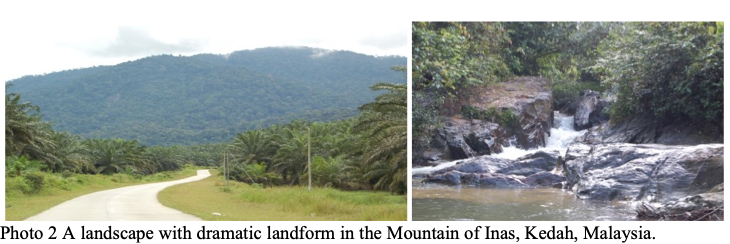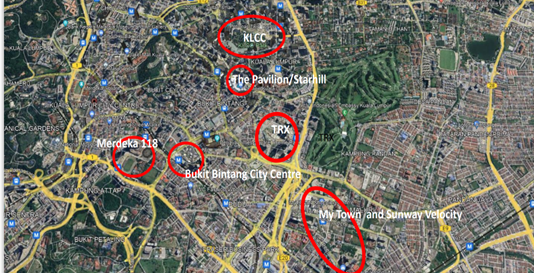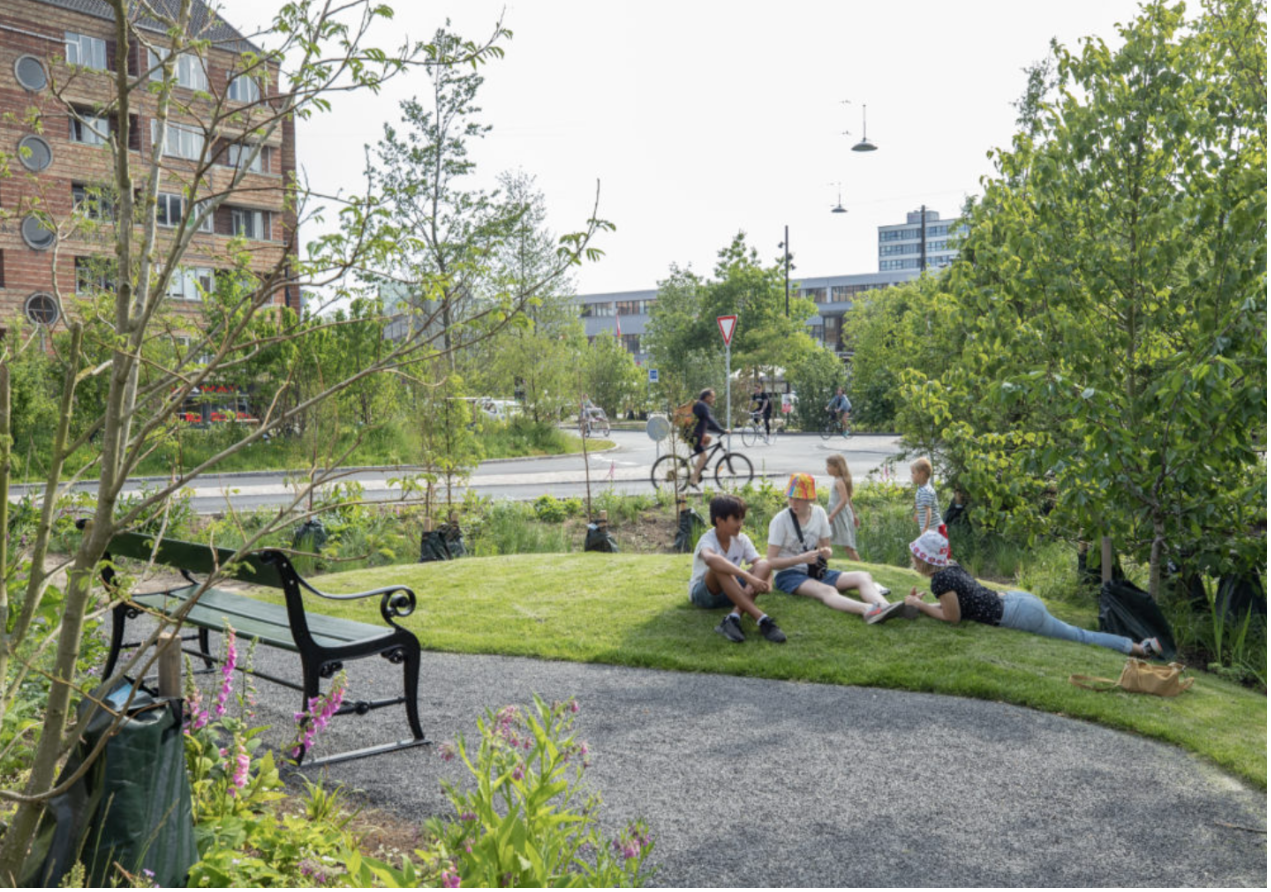Forest landscapes can range from large, continuous tracts of forest used for multiple purposes (production; cultural, recreational, or environmental services; and the like) to mosaics of forests and blocks of trees within the rural landscape (Dewees et al. 2011). This area is a dynamic complex of plant, animal, and micro-organism communities and their biotic environment interacting as a functional unit, where trees are a key component of the system, interact with one another and with the non-living part of the environment – including the soil, water, and minerals (Stepankova, Bihunova & Kabai 2012). Geology, landform, vegetation, soils, water, and fauna are the components of the natural landscape. Whereas all human-made elements belong to the human-made landscape.
The existence of recreational forests is quite often due to the presence of rock types and certain geological structures and geomorphologic features, and among the most common rock-forming recreational forests are hard sandstone and granite (Leman et al. 2007). Geological features such as limestone and rock outcrops (granitic rock and megacrystic granite) that display a different texture from coarse to very coarse (Photo 1) have attracted the public to the recreational forest. Water flows on the hard geological surface of granite rocks and falls from the mountains/hills and rapids making the landscape in the recreational forest very attractive. Waterfalls very seem to be the main geological attraction in the recreational forest and are suitable for recreational activities like bathing and swimming (Dony Adriansyah et al. 2013). Many countries have started to develop schemes for recognizing important geological landscapes within their national boundaries for educating the public on geological and environmental matters (Eder & Patzak 2004).
A landform is another characteristic of recreational forest landscapes. Landforms can influence the observer in visualizing recreational forests. When viewing a landscape, the eye tends to look around a scene, this applies where landform is the dominant landscape influence (Forestry Commission 2011). The most prominent landform features have the strongest visual focus, and lesser forces relate to the minor features (Photo 2). Wonderful landforms such as waterfalls, rivers, hilly to mountainous terrain, and interesting rock outcrops become attractions that make the recreational forest area interesting and enjoyable.
Vegetation is the major landscape element for the recreational forest. There are many types of vegetation in recreational forests, depending on the region where they grow. For instance, in Malaysia forest vegetation can be divided into seven types which are Montane-Ericaceous, Montane-Oak, Upper Dipterocarp, Hill Dipterocarp, Lowland Dipterocarp, Peat Swamp, and mangrove forest. Soils are also part of the natural landscape of recreational forests. Soils in the recreational forest have faced degradation due to recreation such as camping and hiking/trekking activities (Photo 3). Soil is exposed to direct recreational pressure, and the degree of change in its properties is the most objective criterion for assessing digression in recreation areas (Karpachevsky, 1981; Marphinina et al., 1984 in Siikamaki 2009). It is important that the soil is easily eroded by water, wind, snow, and ice. Careless recreation activities speed up the process of erosion by damaging the soil's structure and its normal resistance to erosion. In all situations, suitable physical and biological methods must be applied to protect the soil against accelerated erosion. Once it is exposed and eroded, it affects the visual quality of the park and reduces the visitor experience as well as can cause injury to visitors. Thus, proper management and control are needed to avoid soil deterioration and exploitation in recreational forests.
Watercourses such as rivers, waterfalls, and lakes are added value for recreational forest landscapes (Photo 4). According to Janeczko (2009), the attractiveness of forest landscapes is influenced not only by the number but primarily by the character of watercourses and water reservoirs. This diversity also means contrasts in the natural landscape that, according to many authors, is an important criterion in choosing a place for recreation. It is difficult to point to two elements in a landscape that would show more contrast and power of attracting tourists than forest and water. Therefore, the most preferred places for forest recreation are places located near watercourses and water reservoirs (Janeczko, 2002).
Last, but not least, the fauna of recreational forests is also part of landscape elements (Photo 5). Most people enjoy observing wildlife and many participate in recreational activities such as bird watching, insect collecting, photography, hunting, and fishing, to name a few (University of California 2007). Amongst the insects that can be found in the recreational forest are dragonflies like a Orchithemis pulcherrima and Neurothemis fluctuans (Wahizatul et al. 2006). They can find along the habitat’s permanent gradient ranging from permanent running waters and lakes to small temporary rain pools (Corbet 1999). Forest mammals such as monkeys, otters, deer, rodents, and rabbits are the ones most people know as wildlife. While birds add colour, movement, and sound to the forest and play crucial roles in the forest ecosystem by dispersing seeds, pollinating plants, and eating insects and rodents (University of California 2007). Therefore, the management and visitor need to understand forest wildlife relationships and functions and how to maintain or enhance their recreation.
In summary, the landscape of recreational forests is a fragile environment and sensitive to human disturbance. Any human-made landscape elements necessary in the park should be designed and built carefully. Consequently, a good strategy for creating recreational forests as well as a proper management system is necessary to achieve the main goal of their development, which is conservation. The ecotourism approach that has been applied in recreational forest development is perceived as an effective tool for conservation. One of the main activities of ecotourism is nature appreciation, which can stimulate and enhance people's awareness of natural environments (Mohd Kher & Noorizan 2007). Furthermore, the sustainable and wise use of recreational forests should be implemented to protect our ecosystems for the benefit of future generations. Nevertheless, there is an ongoing debate on whether the government's effort to develop tourism activities will destroy or reduce recreational forests.
List of Photos

Photo 1 An outcrop of granitic rock (a) and megacrystic granite with coarse to very coarse-grained (b)




Photo 5 Fauna such as monkeys and frogs in recreational forests are also part of landscape elements.
 |
LAr. Dr. Mohd Kher Hussein
Pensyarah Kanan
Fakulti Rekabentuk dan Senibina,
Universiti Putra Malaysia
|
Tarikh Input: 04/10/2023 | Kemaskini: 04/10/2023 | uswahhasanah
PERKONGSIAN MEDIA


































